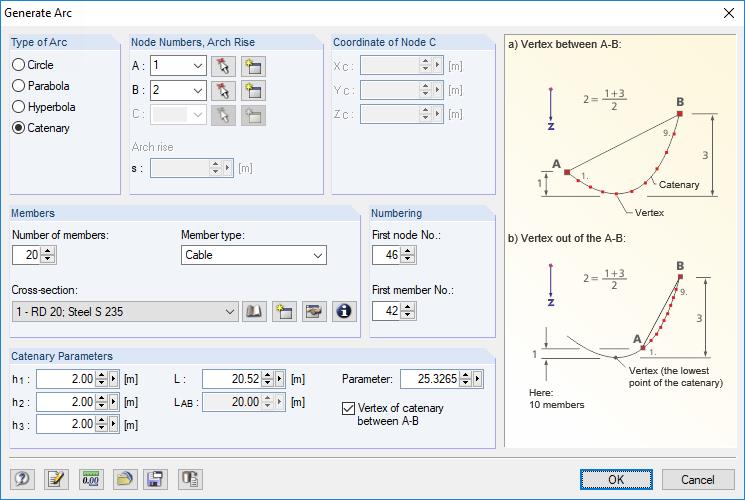Classification
| ln / h < 7 | Additional structural reinforcement layout without additional design is sufficient. In this case, the support can be assumed to be constant. |
| 7 < ln / h < 15 | The opening must be considered in the design. A simplified design according to Book 631 2.4.3. can be carried out when creating a reinforced supporting strip (flush beam strip). Together with the computer-aided slab design (RFEM and RF-CONCRETE), this is unnecessary, considering the existing geometry. |
| ln / h > 15 | A simplified view as a reinforced supporting strip (flush beam strip) is not allowed. You have to consider it using a computer-aided slab design (RFEM and RF-CONCRETE). |
In the following text, we show two options for considering a reinforced supporting strip (flush beam strip) in RFEM.
Analysis on an Equivalent Structure of the Reinforced Supporting Strip (Flush Beam Strip)
Taking into account a load application area and an effective width, you can perform the calculation on an equivalent system.
The load application results in the maximum as a half span (l/2), but generally over a load distribution angle of 60°.
If no slab design is available and the condition 7 < ln / h < 15 is fulfilled, you can perform the design on the equivalent system. However, if you perform the calculation in RFEM, you do not have to consider this approach. If you want to perform a design on the beam, you can use the result beam. You can assign an integration width to the result beam corresponding to the load application (simplified as a constant distribution with a maximum integration width in mid-span).
Plate Design Based on Existing Geometry
As described in Book 631 2.4.3 b), a plate design can be performed for all areas with ln / h. If you compare the results for the required reinforcement for the slab design in the area of the load application with the reinforcement determined on the equivalent system (result beam), the result is practically the same.
In connection with the reinforcement design, a question arises regarding the stiffness distribution. If the reinforcement is concentrated along a line (for example, a beam reinforcement), it can be assumed that the stiffness increases in this area. However, it is questionable whether this has to be considered in the design. If you increase the stiffness of the slab along a strip as an example, the following behavior appears.
The required reinforcement is concentrated in the area of the plate strip of which the bending stiffness has been increased by 50%, for example. However, the sum of the entire reinforcement distribution remains approximately the same. The load does not increase, but only distributes itself differently and is concentrated on the stiffer element.
Conclusion
Is it necessary to design a flush beam strip with a member?
It is not necessary to perform a design on the beam to determine the required longitudinal reinforcement. A design of the surface results in approximately the same amount of reinforcement, but a different distribution.
Is it necessary to increase the stiffness of the flush beam strip due to concentrated reinforcement?
It is not necessary to increase the stiffness. The distribution of the stiffness depends on the distribution of the reinforcement. If the reinforcement is concentrated in the area of the intermittent support, it can be assumed that there is an increased stiffness, consequently an increased loading, and finally, a higher determined required reinforcement. Conversely, a lower stiffness would result if the reinforcement is not concentrated in the area of the intermittent support.




































![Basic Shapes of Membrane Structures [1]](/en/webimage/009595/2419502/01-en-png-png.png?mw=512&hash=6ca63b32e8ca5da057de21c4f204d41103e6fe20)





































.png?mw=600&hash=49b6a289915d28aa461360f7308b092631b1446e)